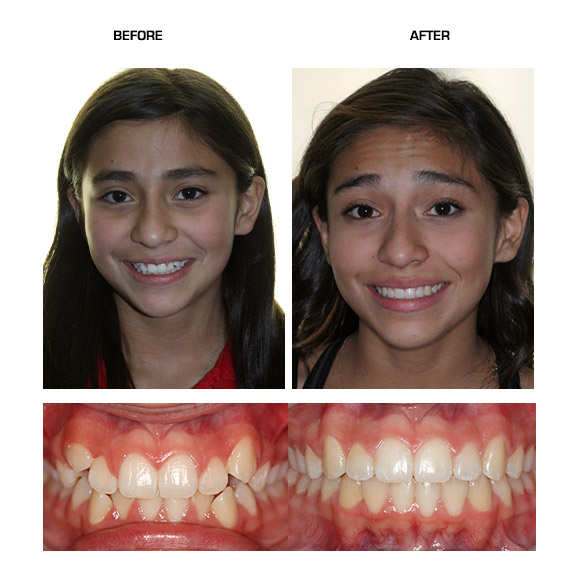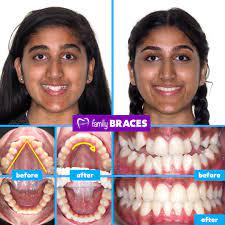The primary cause of a narrow bite is genetics. Inherited traits can affect the size and shape of the jaw, leading to an abnormal bite. Additionally, habits such as thumb sucking or prolonged pacifier use during childhood can contribute to the development of a narrow bite. Other factors, such as missing or misaligned teeth, can also play a role in the misalignment of the bite.
Common symptoms of a narrow bite include difficulty biting or chewing, speech problems, jaw pain or discomfort, headaches, and excessive wear on the teeth. In severe cases, a narrow bite can even lead to temporomandibular joint disorder (TMJ), which causes pain and dysfunction in the jaw joint.
Treatment for a narrow bite depends on its severity. In mild cases, orthodontic treatment, such as braces or clear aligners, may be sufficient to correct the misalignment. In more severe cases, orthognathic surgery may be necessary to reposition the jaw and correct the bite. Regular dental check-ups and early intervention are crucial in preventing complications associated with a narrow bite.
Causes of narrow bite

One of the main causes of a narrow bite is genetics. Some individuals may inherit a narrow jaw or misaligned teeth from their parents, making them more prone to developing a crossbite. Additionally, certain medical conditions, such as cleft lip and palate, can contribute to a narrow bite.
Habitual behaviors can also play a role in the development of a narrow bite. Thumb sucking, tongue thrusting, and prolonged use of pacifiers or bottles can put pressure on the teeth and jaw, causing them to shift and leading to a crossbite.
In some cases, a narrow bite can be caused by an abnormal growth pattern of the jaw. This can occur due to a developmental issue or a trauma to the face or jaw. The abnormal growth can lead to a misalignment of the teeth and contribute to a narrow bite.
Symptoms of narrow bite

Dental symptoms

One of the most common symptoms of a narrow bite is difficulty biting and chewing. This misalignment can make it challenging to properly break down food, leading to discomfort and potential digestive issues. Additionally, a narrow bite can cause excessive wear on certain teeth, leading to tooth sensitivity and an increased risk of tooth decay.
Another dental symptom of a narrow bite is the development of an open bite. This occurs when the upper and lower front teeth do not touch when the mouth is closed. An open bite can lead to speech difficulties, such as lisping, and can also impact the appearance of the smile.
Facial symptoms
In addition to dental symptoms, a narrow bite can also cause facial symptoms. One common facial symptom is jaw pain or temporomandibular joint (TMJ) disorder. The misalignment of the teeth can put strain on the jaw joint, leading to pain, clicking or popping sounds, and difficulty opening and closing the mouth.
Another facial symptom of a narrow bite is facial asymmetry. When the upper and lower teeth do not align properly, it can cause the face to appear unbalanced. This can affect a person’s self-esteem and confidence.
Psychological symptoms

Having a narrow bite can also have psychological effects. Many individuals with a narrow bite may feel self-conscious about their smile or facial appearance. This can lead to a lack of confidence and potentially impact social interactions and overall well-being.
Additionally, the physical discomfort and pain associated with a narrow bite can cause stress and anxiety. This can further impact a person’s mental health and overall quality of life.
Treatment for narrow bite
One common treatment option for a narrow bite is orthodontic treatment, which involves the use of braces or aligners to gradually move the teeth into the correct position. This can help to widen the dental arch and create more space for the teeth to align properly.
In some cases, a palatal expander may be used to widen the upper jaw. This device is typically worn for a certain period of time and gradually expands the palate to create more space for the teeth.
In more severe cases, oral surgery may be necessary to correct a narrow bite. This can involve procedures such as jaw surgery or tooth extraction to realign the jaw and create a more balanced bite.
After the initial treatment, it is often necessary to wear retainers or other appliances to maintain the results and prevent the teeth from shifting back into their original position.
In addition to these treatment options, it is also important to address any underlying factors that may have contributed to the development of a narrow bite. This may include habits such as thumb sucking or tongue thrusting, which can put pressure on the teeth and jaws and contribute to misalignment.

Dr. Fidel Cann: Esteemed orthodontist with a lifelong dedication to enhancing smiles and oral health. Pioneering expertise, compassionate care.





